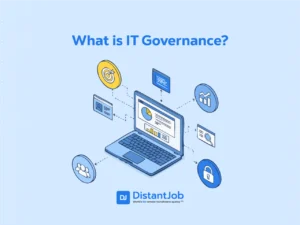A diversity recruitment strategy is a crucial priority for most businesses. Not only does workplace diversity enhance productivity and profitability, as over 85% of CEOs say, but it is also an effective way to attract the best candidates for your project.
Only in the US 76% of employees first look at the diversity and inclusion policies before applying for a company. Including a diversity strategy is a necessary move to attract the best candidates today more than ever. But how do you promote diversity in your hiring process? What does it actually mean to establish a diversity and inclusion hiring strategy?
What is a Diversity Recruitment Strategy?
A diversity, equity, and inclusion (DEI) recruitment strategy establishes a recruitment process free of conscious and unconscious biases to provide equal opportunity to each applicant. More than just filling a single designated DEI role, it means acknowledging and embracing how different abilities, social conditions, genders, and ethnicities can bring new skills to the table, giving space to different voices and perspectives.
However, to improve cultural competence and bias reduction in hiring practices, it is important to understand what we refer to when we talk about diverse recruitment strategies.
Types of Diversity in the Workplace
Diversity in the workplace can take many forms and refer to sexuality, religion or ethnicity. To start improving your recruitment process, let’s have a look at the main types of diversity to see how to implement your recruitment strategy:
- Cultural Diversity: It refers to the diverse backgrounds of each candidate, including the applicant’s range of beliefs, heritage, world perspectives, behaviors, and languages.
- Racial Diversity: Often associated with cultural diversity, racial diversity relates more to the applicants’ biological traits, such as color, nationality, or ethnicity.
- Gender Diversity: The gap between women and men is still relevant in many workplaces. For example, only 18% of women make it to executive positions worldwide, and only 5% as CEOs.
- Physical Disabilities: According to the Center for Disease Control and Prevention, only in the US, over 26% of people have disabilities and often struggle to find inclusive and accessible workplaces.
- Diversity in Personality Types: Diversity doesn’t refer to gender or race but also to personality traits that can help you build an inclusive workplace.
Why is a Diversity Recruitment Strategy Relevant in 2024?
Why are diversity and inclusion hiring strategies still relevant today? In short, the world is changing fast, and a variety of perspectives and voices is the best way to stay ahead of your market niche and stand out from competitors.
Let’s give some numbers to see how a diversity hiring strategy can support your business:
- Deloitte Global Human Capital Trends research found that 78% of respondents believe that diversity and inclusion are a competitive advantage—39% specified a “significant” competitive advantage.
- McKinsey & Company shows that companies committed to gender diversity on executive teams were 21% more likely to outperform profit goals and 27% more likely to have more innovative outcomes.
- On the employees’ side, 57% of employees prefer companies with diversity strategies. (Glassdoor)
- 81% of young people, the so-called Gen Z, have one or more friends of a different race and would not consider workplaces without an inclusivity policy. (Business Insider)
- The Social Mobility Commission (SMC) highlights that many industries are missing highly talented candidates because they do not expand their talent pool in terms of diversity.
Diversity is a fundamental element of improving your recruitment strategy. But how do you promote diversity in hiring for your team?
5 Strategies to Build a Diversity Recruitment Strategy for Your Business
Building a diversity recruitment strategy involves more than adding an extra paragraph to your job description. If you want to attract the right candidate and make diversity an effective strategy, you need to first look at your business and understand how to change your processes with your existing team.
Let’s have a look at 5 diversity strategies that can help you and your team set up a more inclusive hiring process and expand your business:
1. Set Clear Goals
Set clear goals with your existing team to see which type of diversity and inclusivity you want to target and how it could help your business.
For example, you run a remote business based on sales and customer services. To start implementing your recruitment process, you can target people with physical disabilities, giving them the opportunity of accessing a full time job without leaving the house. Running a business working in different time zones, you could offer a flexible yet stable opportunity to single parents who need a more flexible time schedule. If you run a food delivery service, implementing ethnicity diversity can help you meet customers’ requests, as could be not eating pork, and expand your existing offer. Or, launching a clothing brand for new generations and implementing gender diversity can help you target different groups and open your business to new opportunities.
There are many ways in which diversity can benefit your business. Setting goals helps you and your team understand how to make diversity a concrete strategy for your business rather than just a word on your job ads.
2. Assess and Update Job Descriptions
Unintentional bias can happen anywhere and at any time. After considering which diversity strategy best suits your team, you must examine and upload the language used on your website and job description.
For example, to emphasize your company’s commitment to inclusion and diversity, you can highlight how the initial screening process of your company bypasses information like sex or age to focus solely on qualifications and skills. Or, you could specify why you are opening a position specifically targeting gender diversity.
For example, you sell underwear for women of any size or body shape, and you are launching a new collection to help those who are transitioning or have a different type of body. For this reason, you are looking for diverse applicants to understand better the needs of those who have a more untraditional body or necessity.
Diversity in your recruitment strategy can be effective only if it makes sense for your business; that’s why the first step is to set goals!
4. Diversified Sourcing Channels
You cannot expand your talent pool and look for diversity in the same old places.
After setting your goals and updating your company’s language, the next step is to expand your search, targeting new channels and collaborating with diversity-focused organizations to reach the right candidates.
Here are some strategies that you can think of to expand the recruitment pool for your business:
- Specialized diversity job platforms: Everyone online has a niche, and targeting specific platforms also helps you improve your language and approach to diversity. Platforms like DiversityJobs, Black Career Network, or RecruitDisability.org fully focus on diversity-friendly workplaces, and it can be a first step to stand out from your competitors and highlight your commitment to diversity and inclusion.
- Social media & digital networks: On the same line, social platforms allow you to connect to niche communities. For example, Twitter threads, Slack channels or Reddit forums can be an effective starting point to understand how to connect with different communities and ensure avoiding biases or exclusive behavior.
- Collaborate with diversity-focused organizations and educational institutions: Partnering with established organizations promoting workforce not only can help you create more appropriate and inclusive job positions, but also build a strong reputation among different communities that will stay over time.
- Job fairs: On the same line, participating in job fairs can help you present your company’s diversity policy and connect with marginalized communities by showcasing your strategies and policies.
- Implement exclusive branding & marketing: Marketing and social media are the first things a candidate is going to see what your company is about. In combination with updating your language and job description, it is important to allig all your design and content to your inclusivity goals.
5. Innovate Interview Processes
The interview process is a crucial moment not only to understand who will be the best fit for your team but also to present your company and mission to future teammates.
Besides implementing job descriptions using gender-neutral language like “chairperson” instead of “chairman,” make sure to explain why you want diversity for your team and why you think it is important to have different voices.
As we mentioned before, the goal of diversity is not enough. When you hire new people, setting goals is an essential step to understanding how to structure the interview process and select the right skills and personality. Along the same line, once you decide which type of diversity you need for your business, you can rethink your interview structure to avoid exclusive
Here are some examples of unbiased interviewing strategies:
- Structured interviews: Prepare a set of consistent questions for each candidate for the first screening process to make sure to evaluate different candidates with the same criteria.
- Innovate interview process: Depending on what you need, you can change the structure of the interview. For example, some companies have tests for developers instead of traditional interviews. Finding different ways to evaluate candidates will give your applicants more opportunities to show what they can do, making your interview process highly inclusive.
- Regular training session for your team: The best way to innovate your interview process is to learn from previous experience. After the first round of interviews, it’s important to meet with your team and discuss together what went well and what didn’t, updating the interview process in time and also relying on the feedback of new hires and team mates.
Tips to Assess Your Current Recruitment Strategy
Implementing your diversity recruitment strategies also means finding new methods and tools to assess your progress over time. Learning from your previous experiences is the first step to improving and establishing a diversity recruitment strategy. After that, it’s important to improve your methods with your team with new measurement strategies to determine how effective your strategies are.
Here are a few essential techniques for optimizing and assessing your diversity selection processes:
- DEI data analytics tools: Implement tools to analyze hiring data and learn how people of different identities and backgrounds apply for jobs. Use this data to improve your diversity recruitment plan over time.
- Employee surveys and feedback: People’s feedback and experiences are some of the best sources to understand what you need for your specific situation. While data and metrics can give you a good overview, how your team or candidates experience your recruitment process is the best way to implement your business strategy.
- Review diversity metrics: Set clear diversity metrics for your hiring process, and use these numbers to compare general metrics and your team feedback to adjust your recruitment process over time.
- Flexibility and learning: When we talk about diversity, always remember that you will never find the perfect strategy because you will also need to adjust to your team’s transformations. So, flexibility and learning are always your best strategies when it comes to hiring processes!
Conclusion
Diversity can be a great tool to enhance your team’s dynamics and bring innovation to your projects.
While a diversity recruitment strategy can open endless doors for your business, it’s necessary to set clear goals for your team and target your strategies to find the right candidates.
Once you know what you need for your business, you can also rely on a remote recruitment agency to select the right candidate – and if you need help with remote hiring, our DistantJob recruitment experts can help you speed up the hiring process, and you can focus on exploring the potential of diversity with your team!





